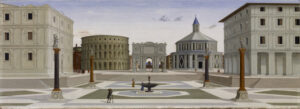Greetings, Members of AIA Baltimore!
The June 24th collapse of the Champlain Towers South condominium in Surfside, Florida has gripped and horrified the nation. The loss of the building and anticipated scores of human souls is of an epic scale. We’re not accustomed to having inhabited structures simply fail, to such catastrophic results, in a country where construction is so heavily regulated. Our building codes, best practices, quality materials, and regulatory oversight does well in separating us from third-world countries where this sort of disaster is more expected, although no more acceptable.
While the general public has been shocked by this incident, I’m sure I don’t stand alone when I say that, as an Architect, this is especially frightening and eye-opening. It’s too early to tell exactly what happened to cause this collapse, but, unlike the World Trade Center collapse on 9/11, we know it wasn’t the result of intentional outside forces. Was it simply poor or deferred maintenance? Negligence? Poor construction execution? Poor design? It’s the latter that affects us the most. It speaks to the over-riding code of conduct of our profession, from NCARB’s Code of Conduct that guides the codes of conduct of licensing boards all over the country:
“In practicing architecture, an architect’s primary duty is to protect the public’s health, safety, and welfare. In discharging this duty, an architect shall act with reasonable care and competence, and shall apply the knowledge and skill which is ordinarily applied by architects of good standing, practicing in the same locality.”
It reinforces the immense responsibility that we have in our profession and how every decision, no matter how small, can affect the built environment. It’s a lot of pressure on our overall design efforts and the details and documents that realize those designs. My first boss, the late Paul Albright, AIA, said to me early in my professional career to “think like a drop of water” when working through any building detail. The goal being, of course, to detail in such a way that that drop of water not enter your building. Could the Champlain Towers have been brought down by something as simple as drops of water, over forty years, corroding the reinforcing steel and compromising the structural integrity of the tower? We’ll eventually find out and hopefully all learn from the results so that this never happens again, but in the meantime, continue to do your best, with reasonable care and competence.

Scott A. McGovern, AIA – 2021 President – AIA Baltimore



